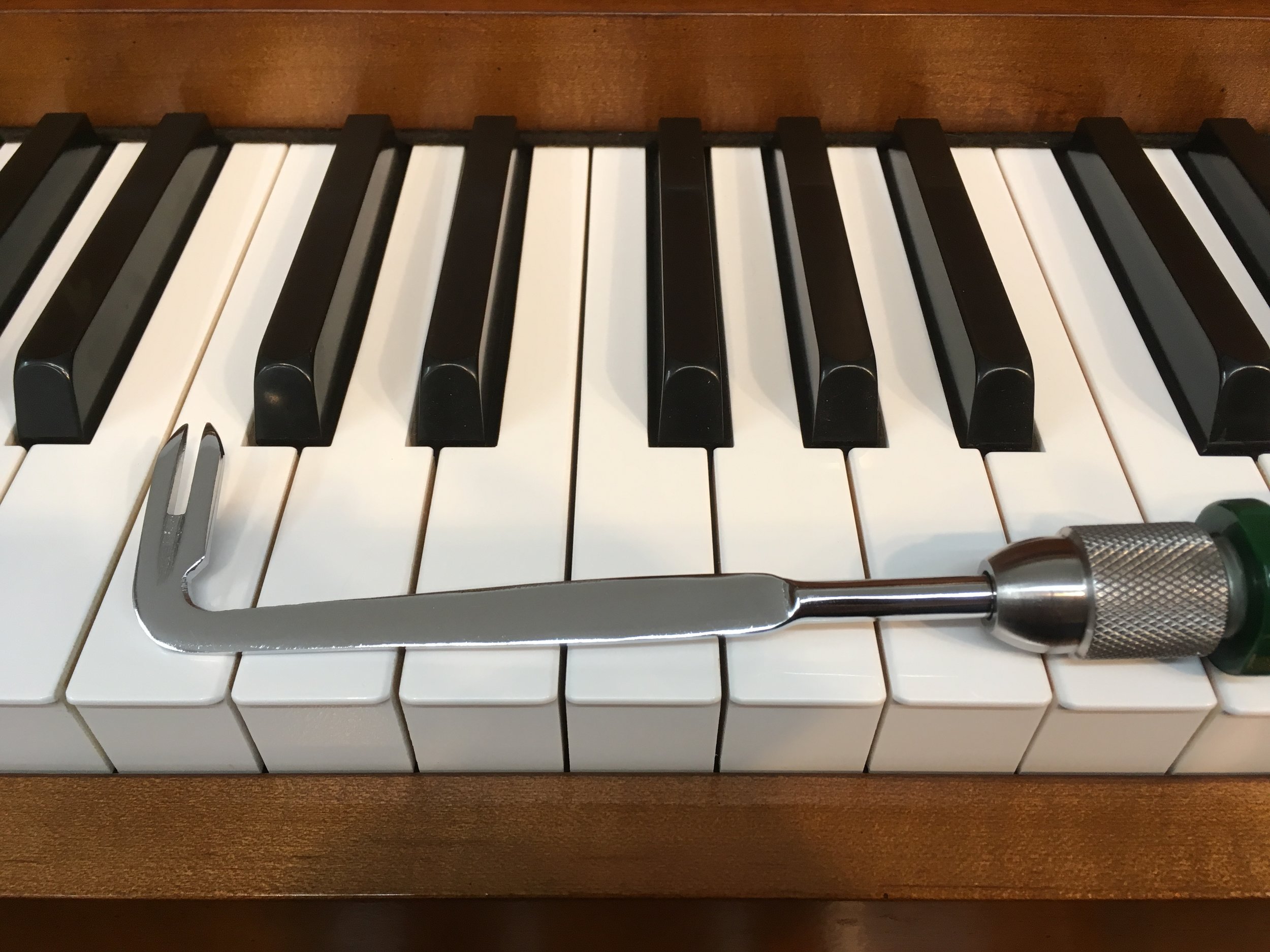Check out our video about spoon bending on YouTube! Here is a transcription of the video:
My dad was an expert at the spoon bending illusion. I never imagined that one day I would become a professional spoon bender.
Inside upright pianos there are 88 tiny spoons only accessible by professionally trained spoon benders, aka piano technicians. These spoons actuate the damper when the key is pressed. The damper is the white cushion that rests on the strings and mutes the sound when the key is not depressed.
I press the key and the spoon presses against the damper lever causing the damper to lift. Multiply this model by 88, and you can see that the process of adjusting the spoons inside a real piano is a blind process that must be done by feel.
When properly adjusted, the damper should begin to rise when the hammer has traveled half the distance to the string. Using a spoon bender to bend the spoon, I have improperly adjusted this spoon so the damper begins lifting immediately upon pressing the key.
Improperly adjusted dampers cause difficulty in playing the piano. On this improperly adjusted Middle C, nearly 80 grams of downward force is required to cause the key to begin to drop.
The properly adjusted spoon on the neighboring D key causes the damper to lift off the string when the hammer has traveled half the distance to the string. The downward force required to cause this key to begin to drop is much more comfortable at about 50 grams.

